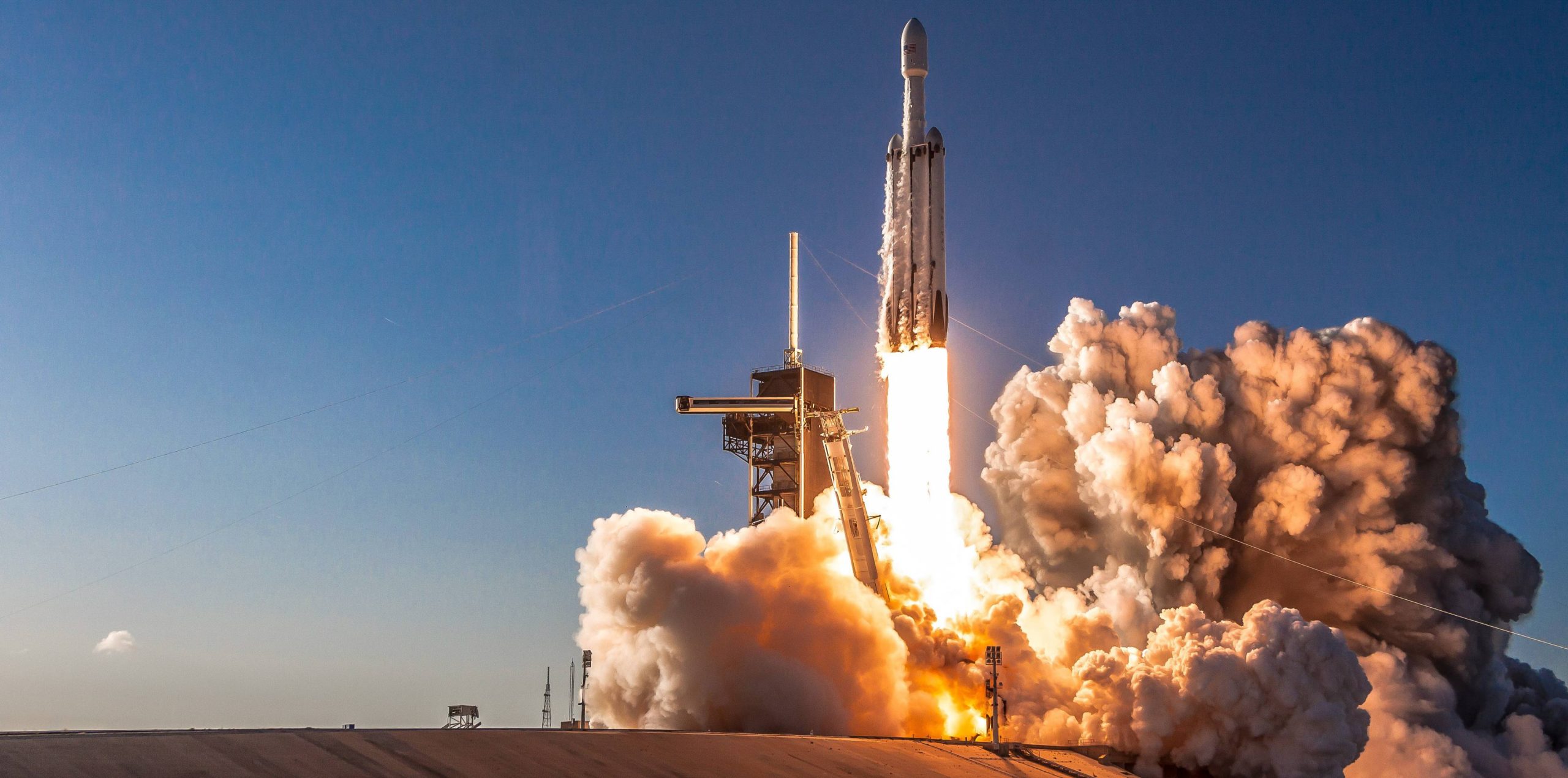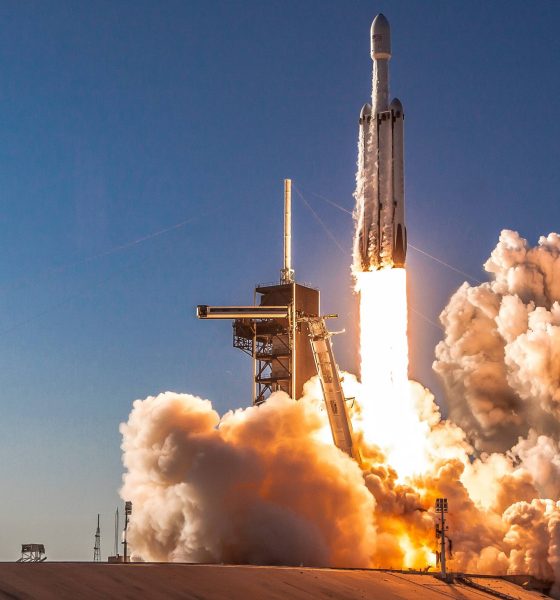

SpaceX
SpaceX preps for Cargo Dragon, Falcon Heavy launches despite setbacks
Despite suffering the loss of the first Falcon Heavy Block 5 center core and a catastrophic failure of the first flight-proven Crew Dragon spacecraft in nearly the same week, SpaceX’s core operations continue as usual to prepare for multiple launches in the coming months.
The echoes of the past week’s failures and ‘anomalies’ will undoubtedly ring for months to come but SpaceX now finds itself in a unique situation. Despite the imminent start of a major failure investigation, it appears unlikely – at least for the time being – that it will impact the majority of Falcon 9 and Falcon Heavy launches planned for the rest of 2019. Currently on the Q2 2019 manifest are Cargo Dragon’s 17th operational mission (CRS-17), the first operational Starlink launch, Spacecom’s Amos-17 satellite, the Canadian Radarsat Constellation Mission (RCM), and Falcon Heavy’s third launch (STP-2).
Cargo Dragon – CRS-17
Following an April 20th explosion that destroyed Crew Dragon C201, SpaceX’s next launch – Cargo Dragon CRS-17 – has likely just become the most important in the near-term. Although Crew Dragon shares almost nothing directly in common with Cargo Dragon, both spacecraft still do come from the same lineage, relying on the same propellant and Draco maneuvering thrusters, as well as similar plumbing (excluding SuperDraco pods) and many of the same engineers and technicians.
On the other hand, Cargo Dragon has never suffered a catastrophic anomaly on the ground or in flight, although SpaceX has dealt with a fair share of less serious issues throughout the spacecraft’s operational life. Further, following the August 2017 launch of CRS-12, every CRS mission has launched with a flight-proven Cargo Dragon spacecraft. In fact, it’s quite likely that the CRS-12 Cargo Dragon capsule is the same spacecraft that has been refurbished for CRS-17, as it is currently the only flightworthy capsule to have only flown one orbital resupply mission.
It’s unclear which Falcon 9 booster has been assigned to CRS-17. NASA’s agreement with SpaceX for flight-proven boosters has been predicated on keeping those boosters ‘in-family’, so to speak, meaning that NASA will only accept flight-proven boosters if they have only flown NASA missions. The only booster that currently fits that bill is B1051, previously flown during Crew Dragon’s orbital launch debut on March 2nd, but B1051 has reportedly been assigned to SpaceX’s second Vandenberg launch of 2019 at the customer’s request. CRS-17 will thus likely launch on a new Falcon 9 booster (B1056). There is a chance that Crew Dragon’s catastrophic failure has severely contaminated the Landing Zone area with unburnt MMH and NTO, both of which are extraordinarily toxic to humans in even the tiniest of quantities.
Some launch-related questions may be answered in a NASA media briefing planned for 11am EDT, April 22nd. CRS-17 is scheduled to launch no earlier than 4:22 am EDT (08:22 UTC), April 30th.


Starlink, Falcon Heavy, and more
Meanwhile, the Falcon upper/second stage (S2) spotted in the tweet at the top of the article serves as evidence of preparations for launches planned in May/June, as do a duo of first stage boosters spied during their own Cape Canaveral arrivals. All that’s missing to round out a busy week of SpaceX transportation is the appearance of one or several payload fairings, although CEO Elon Musk says that the company will try to reuse Falcon Heavy Flight 2’s fairing on the first Starlink launch.
Said Starlink launch – unofficially labeled Starlink-1 – is currently scheduled for liftoff no earlier than mid-May, likely making it the SpaceX mission that will follow CRS-17. The most likely Falcon 9 S1 candidate is the thrice-flown Block 5 booster B1046, a move that would retire risk otherwise transmitted to customers. SpaceX has now flown two separate Falcon 9 boosters (B1046 and B1048) three times without major issue, meaning that the fourth flight of the same booster (and beyond) will be new territory for reuse at some level.


Beyond Starlink-1, SpaceX has the communications satellite Amos-17 and Radarsat Constellation Mission (RCM), both of which are understood to be targeting launch no earlier than (NET) early June. Finally, Falcon Heavy Flight 3 – carrying the US Air Force’s STP-2 mission – is scheduled to launch NET June 22nd, although some additional delays are probable.
From a business-as-usual perspective, the fact that Crew Dragon C201 failed during intentional testing on the ground means that it will likely be SpaceX’s least commercially disruptive failure yet. This could change for any number of reasons, depending on the conclusions drawn by the joint NASA-SpaceX investigation soon to begin, and it’s far too early to draw far-reaching conclusions. Chances are good that the impact to non-Crew Dragon launches will be minimal but only time will tell as SpaceX begins to quite literally pick up the pieces and start a deep-dive analysis of all data gathered from Saturday’s failure.
Check out Teslarati’s Marketplace! We offer Tesla accessories, including for the Tesla Cybertruck and Tesla Model 3.

Elon Musk
Starlink achieves major milestones in 2025 progress report
Starlink wrapped up 2025 with impressive growth, adding more than 4.6 million new active customers and expanding service to 35 additional countries, territories, and markets.

Starlink wrapped up 2025 with impressive growth, adding more than 4.6 million new active customers and expanding service to 35 additional countries, territories, and markets. The company also completed deployment of its first-generation Direct to Cell constellation, launching over 650 satellites in just 18 months to enable cellular connectivity.
SpaceX highlighted Starlink’s impressive 2025 progress in an extensive report.
Key achievements from Starlink’s 2025 Progress
Starlink connected over 4.6 million new customers with high-speed internet while bringing service to 35 more regions worldwide in 2025. Starlink is now connecting 9.2 million people worldwide. The service achieved this just weeks after hitting its 8 million customer milestone.
Starlink is now available in 155 markets, including areas that are unreachable by traditional ISPs. As per SpaceX, Starlink has also provided over 21 million airline passengers and 20 million cruise passengers with reliable high-speed internet connectivity during their travels.
Starlink Direct to Cell
Starlink’s Direct to Cell constellation, more than 650 satellites strong, has already connected over 12 million people at least once, marking a breakthrough in global mobile coverage.
Starlink Direct to Cell is currently rolled out to 22 countries and 6 continents, with over 6 million monthly customers. Starlink Direct to Cell also has 27 MNO partners to date.
“This year, SpaceX completed deployment of the first generation of the Starlink Direct to Cell constellation, with more than 650 satellites launched to low-Earth orbit in just 18 months. Starlink Direct to Cell has connected more than 12 million people, and counting, at least once, providing life-saving connectivity when people need it most,” SpaceX wrote.
Elon Musk
Starlink passes 9 million active customers just weeks after hitting 8 million
The milestone highlights the accelerating growth of Starlink, which has now been adding over 20,000 new users per day.

SpaceX’s Starlink satellite internet service has continued its rapid global expansion, surpassing 9 million active customers just weeks after crossing the 8 million mark.
The milestone highlights the accelerating growth of Starlink, which has now been adding over 20,000 new users per day.
9 million customers
In a post on X, SpaceX stated that Starlink now serves over 9 million active users across 155 countries, territories, and markets. The company reached 8 million customers in early November, meaning it added roughly 1 million subscribers in under seven weeks, or about 21,275 new users on average per day.
“Starlink is connecting more than 9M active customers with high-speed internet across 155 countries, territories, and many other markets,” Starlink wrote in a post on its official X account. SpaceX President Gwynne Shotwell also celebrated the milestone on X. “A huge thank you to all of our customers and congrats to the Starlink team for such an incredible product,” she wrote.
That growth rate reflects both rising demand for broadband in underserved regions and Starlink’s expanding satellite constellation, which now includes more than 9,000 low-Earth-orbit satellites designed to deliver high-speed, low-latency internet worldwide.
Starlink’s momentum
Starlink’s momentum has been building up. SpaceX reported 4.6 million Starlink customers in December 2024, followed by 7 million by August 2025, and 8 million customers in November. Independent data also suggests Starlink usage is rising sharply, with Cloudflare reporting that global web traffic from Starlink users more than doubled in 2025, as noted in an Insider report.
Starlink’s momentum is increasingly tied to SpaceX’s broader financial outlook. Elon Musk has said the satellite network is “by far” the company’s largest revenue driver, and reports suggest SpaceX may be positioning itself for an initial public offering as soon as next year, with valuations estimated as high as $1.5 trillion. Musk has also suggested in the past that Starlink could have its own IPO in the future.
News
SpaceX shades airline for seeking contract with Amazon’s Starlink rival

SpaceX employees, including its CEO Elon Musk, shaded American Airlines on social media this past weekend due to the company’s reported talks with Amazon’s Starlink rival, Leo.
Starlink has been adopted by several airlines, including United Airlines, Qatar Airways, Hawaiian Airlines, WestJet, Air France, airBaltic, and others. It has gained notoriety as an extremely solid, dependable, and reliable option for airline travel, as traditional options frequently cause users to lose connection to the internet.
Many airlines have made the switch, while others continue to mull the options available to them. American Airlines is one of them.
A report from Bloomberg indicates the airline is thinking of going with a Starlink rival owned by Amazon, called Leo. It was previously referred to as Project Kuiper.
American CEO Robert Isom said (via Bloomberg):
“While there’s Starlink, there are other low-Earth-orbit satellite opportunities that we can look at. We’re making sure that American is going to have what our customers need.”
Isom also said American has been in touch with Amazon about installing Leo on its aircraft, but he would not reveal the status of any discussions with the company.
The report caught the attention of Michael Nicolls, the Vice President of Starlink Engineering at SpaceX, who said:
“Only fly on airlines with good connectivity… and only one source of good connectivity at the moment…”
CEO Elon Musk replied to Nicolls by stating that American Airlines risks losing “a lot of customers if their connectivity solution fails.”
American Airlines will lose a lot of customers if their connectivity solution fails
— Elon Musk (@elonmusk) December 14, 2025
There are over 8,000 Starlink satellites in orbit currently, offering internet coverage in over 150 countries and territories globally. SpaceX expands its array of satellites nearly every week with launches from California and Florida, aiming to offer internet access to everyone across the globe.
Currently, the company is focusing on expanding into new markets, such as Africa and Asia.








